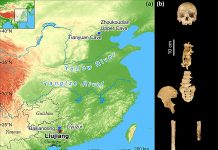Could urban cities be a risk of sinking in China? The hidden threat of land subsidence has been largely overlooked until now
Scientists have revealed land subsidence – sinking cities – is a significant threat to urban areas, especially in China, which would affect hundreds of millions of residents.
Researchers from the University of East Anglia (UAE) and Virginia Tech used satellite data to map and analyse land movement across China. They discovered that 45% of the urban areas studies are sinking, with 16% experiencing rapid subsidence of 10mm or more per year.
Sinking cities
It is estimated that 270 million urban residents will be affected nationwide, including 70 million facing alarming rates of subsidence.
Hotspots like Beijing and Tianjin are particularly vulnerable, to worsening climate change impacts and sea-level rise.
Coastal cities and land sinks
Coastal cities are at the worst of this crisis, as lank sinks it intensifies the threat of flooding and weak sea defences. During Hurricane Katrina’s devastation in New Orleans, this was apparent.
Shanghai, China’s largest city, has sunk up to 3 meters over the past century, and the situation is worsening. By 2120, the combination of subsidence with rising sea levels could expose 55 to 128 million residents to heightened risks, a potentially catastrophic scenario.
What is causing subsidence, and how can it be prevented?
Human activities have been identified as the primary source of subsidence, especially groundwater withdrawals, which lower water tables and weaken the ground’s stability. The weight of urban infrastructure and geological factors also play significant roles.
In the 1970s, effective mitigation strategies proved to work when subsidence was reduced after halting groundwater extraction.
Traffic vibrations and tunnelling are a localised risk, with Beijing experiencing up to 45mm of annual subsidence near major transportation networks.
Measurements to help prevent lower subsidence rates
Professors Nicholls and Shirzaei urge a shift from just measurement to actionable solutions. While new satellite technologies provide detailed data, integrating this information with urban planning is critical to address the growing subsidence crisis.
“Many cities and areas worldwide are developing strategies for managing the risks of climate change and sea-level rise,” said Prof Nicholls. “We need to learn from this experience to also address the threat of subsidence which is more common than currently recognised.”
Cities can better prepare for the evolving urban challenges ahead by learning from past experiences and adopting innovative approaches.














